A trip like no other
Travel , Yoga / July 12, 2020 / 12 Minute Read / Comments
Traveling will never be the same again. The COVID-19 pandemic has changed the way we move, work and think. We were lucky to take a year of traveling in 2019 and visited 11 countries. Just as we were about to end our nomadic year and settle down, we decided to get the last bit of travel to Colombia and Peru in March 2020. This is our traveling experience during the evolution of the virus from an epidemic to a pandemic. Keep scrolling to find out how I strangely discovered similarities between yoga and shamanism.
Colombia
Colombia’s highlight is the polite and friendly people. Their sing-song tone and the way of speaking Spanish is adorable. Another highlight is the topography replete with mountains which makes driving long distances a lengthy and sometimes impossible task. Choose Avianca airline and you won’t be disappointed. A downside of Colombia is the high 19% VAT (Value Added Tax) that makes it a bit expensive to eat out, for example. It’s very strange that tourists don’t pay a hotel VAT but Colombian nationals do. Tourists can also get a refund on shopping items like clothes, handicrafts, etc. for non-cash payments before departure at the international airports, like in many other countries. Check out the brand Loto del Sur for exotic nature-inspired cosmetics reminiscent of L’Occitane, but with Amazonian exotic ingredients and the Khaza brand for unique Colombian hand-made sombreros (hats) available at Territorio shops. And if you’re an Indian reading this, let me tell you that the Bata shoe shop has already made its way into Latin America! 😊
Bogotá
When we landed in Bogotá, the capital city, there was just the very first confirmed case of COVID-19. Temperature checks were mandatory at the airport but everything was being conducted as usual. A modern city with a flair of its colonial past, we made the most out of our two-day trip with a visit to the famous Monserrate and Museo del Oro (gold museum).
Monserrate
Probably with the best panoramic views of the city, there is something for everyone at Monserrate. Its religious significance is from the pre-columbian times when the indigenous Muisca people had temples built on this mountain. Like most other inquisitions of indigenous sites of worship, the Spanish colonial era saw the replacement of the temples with a Catholic shrine that became the epicenter of Monserrate. The train ride up is steep and quite an adventure with breathtaking views of the city and mountains with lush green tall trees. Picture-perfect for a romantic date are cute little restaurants around the church. The souvenir shops dotted along the narrow street behind the church are perfect for gifts. About two dozen cantinas showcase the perfect variety of the hearty local cuisine from the pandebono to bandeja paisa. Like in some other countries, Sundays are closed off to all vehicles except for bicycles strutting around the main streets. Our bicycle adventure coincided with International Women’s Day so we got to be part of a lively afternoon with bicycle parades, group fitness sessions on the street, and awareness programs around women’s rights.
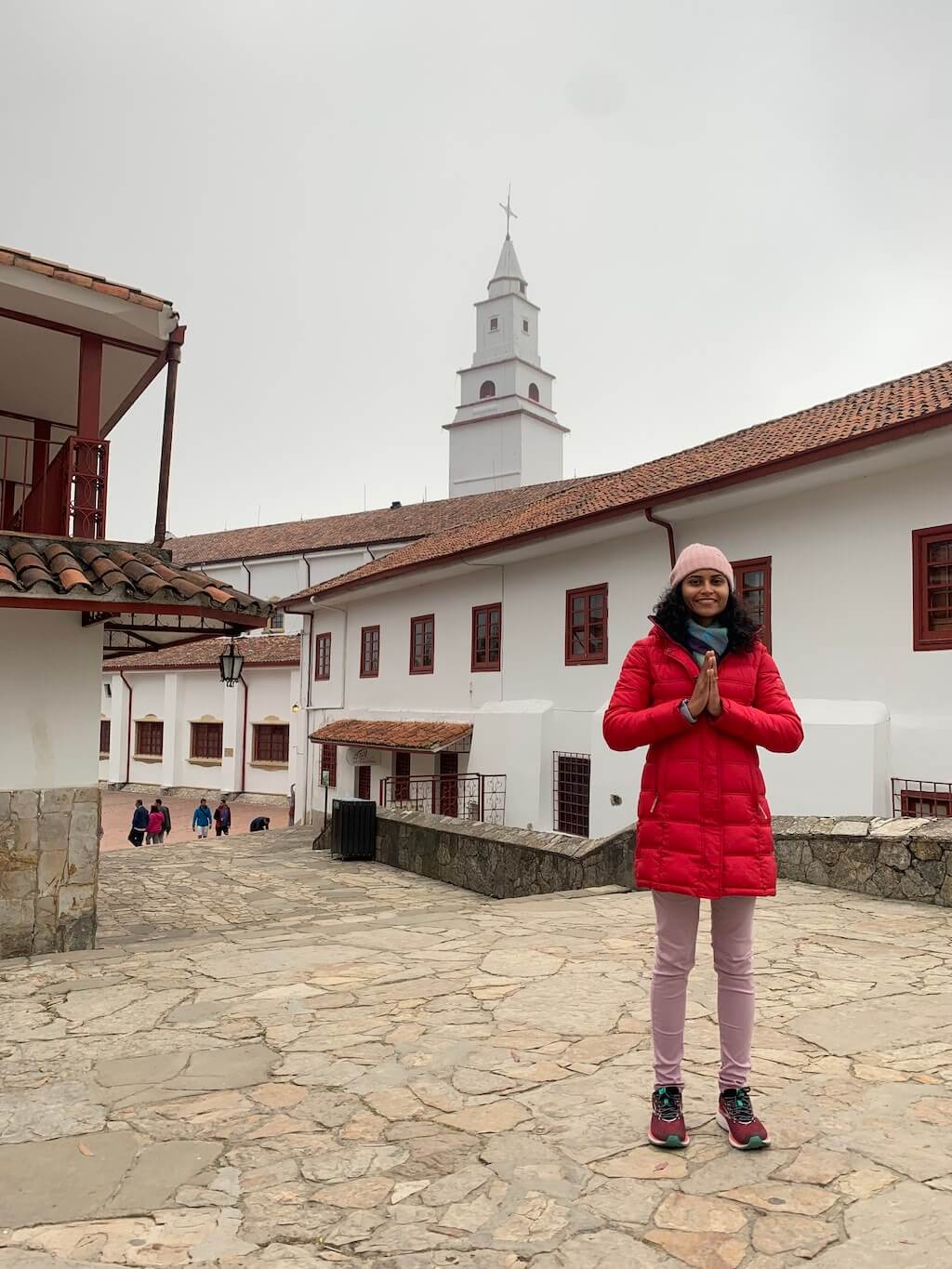 |
|---|
| Behind the shrine of Monserrate |
Museo del oro, shamanism and yoga
The Museo del Oro has an extensive collection of pre-columbian gold artifacts that depicts the richness of the indigenous culture. The most fascinating section for me was that of the offerings and rituals because of its similarity with ancient Vedic and yogic traditions. The shamans have a lot in common with the yogis. Both believe that divinity is within all objects and are healers who are in tune with nature and themselves. Yogis and shamans master the unseen spiritual realm through austere self-discipline called ‘tapas’ and their goal is to seek union with the ultimate source of energy that connects everything in the universe. The approaches are a little different though, with the yogi delving internally to understand the true nature of reality without the use of external aids. On the other hand, the shaman achieves trance-like altered states of consciousness to commune with spirit beings and brings back information about healing those in need. Both shamans and yogis value meditation. Take the ‘basket man’ for example, a shaman sitting with arms around the knees in intense concentration. This practice of concentration on a fixed object is what a yogi calls ‘dharana,’ the sixth of the eight limbs in classical Ashtanga Yoga. I have tried this basket sitting pose alternating it with siddhasana while meditating and it is very comfortable, but just make sure to keep the spine upright.
 |
|---|
| The Basket Man - Some indigenous groups believe that apprentices keep the teachings of the masters in the basket |
The master-disciple tradition, reverence for nature and offerings to the Gods to restore balance on Earth similar to ‘havans’ or sacrificial fires are common to both the shamanic and Vedic traditions. Regarding these shamanic offerings, the museum explains the importance of balance between opposing powers (Shiva and Shakti in yogic philosophy) and when the balance is broken, it can be restored through sacred offerings. Gold is the metal of choice for both the indigenous shamanic traditions as well as offerings in Hindu temples.
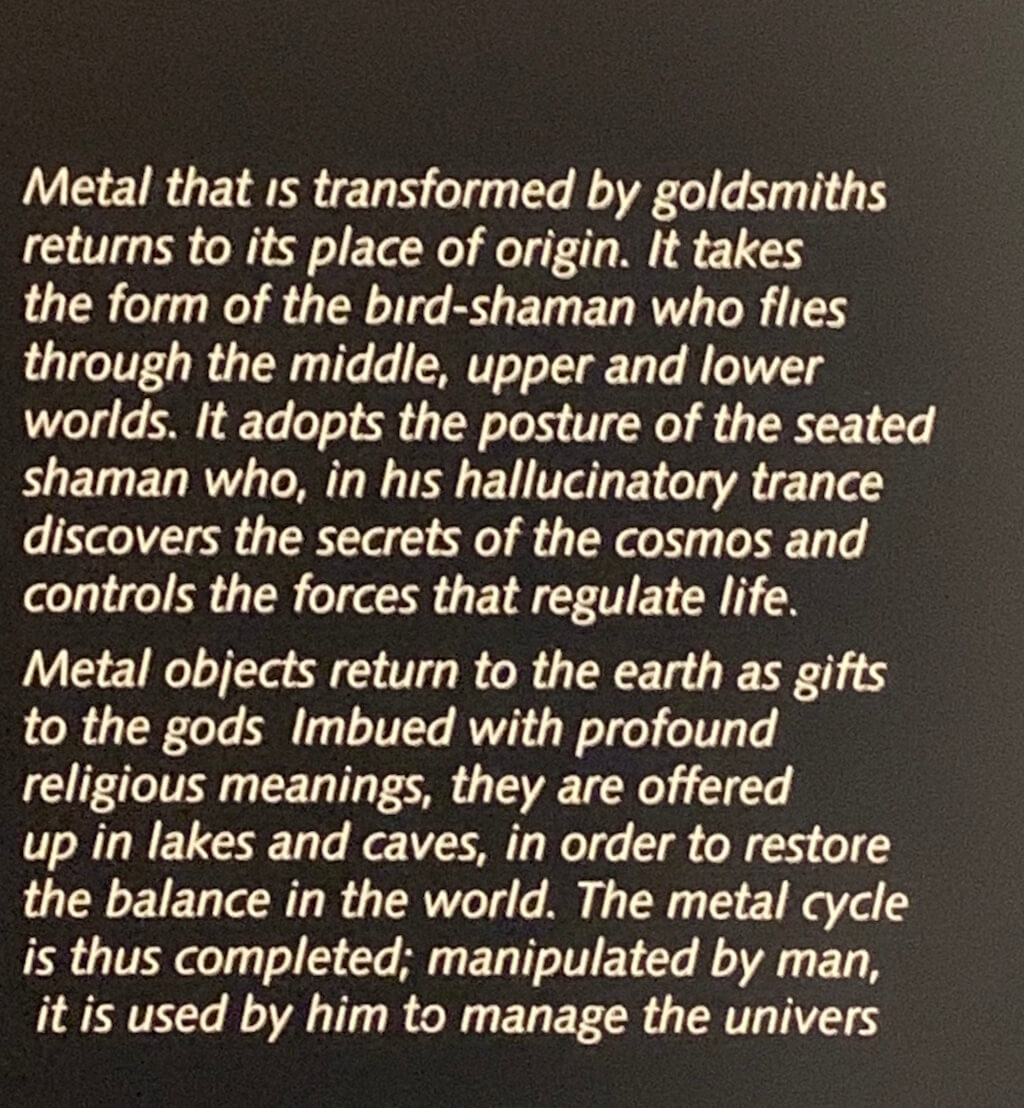 |
|---|
| Why gold was used for sacred offerings |
Cartagena
Everyone should visit the city of Cartagena on Colombia’s Caribbean coast at least once in their lifetime if possible! The colorful murals in Getsemani and its hip vibe, the vibrant colonial houses and the fruit-ladies (palenqueras) are a feast to the eyes.
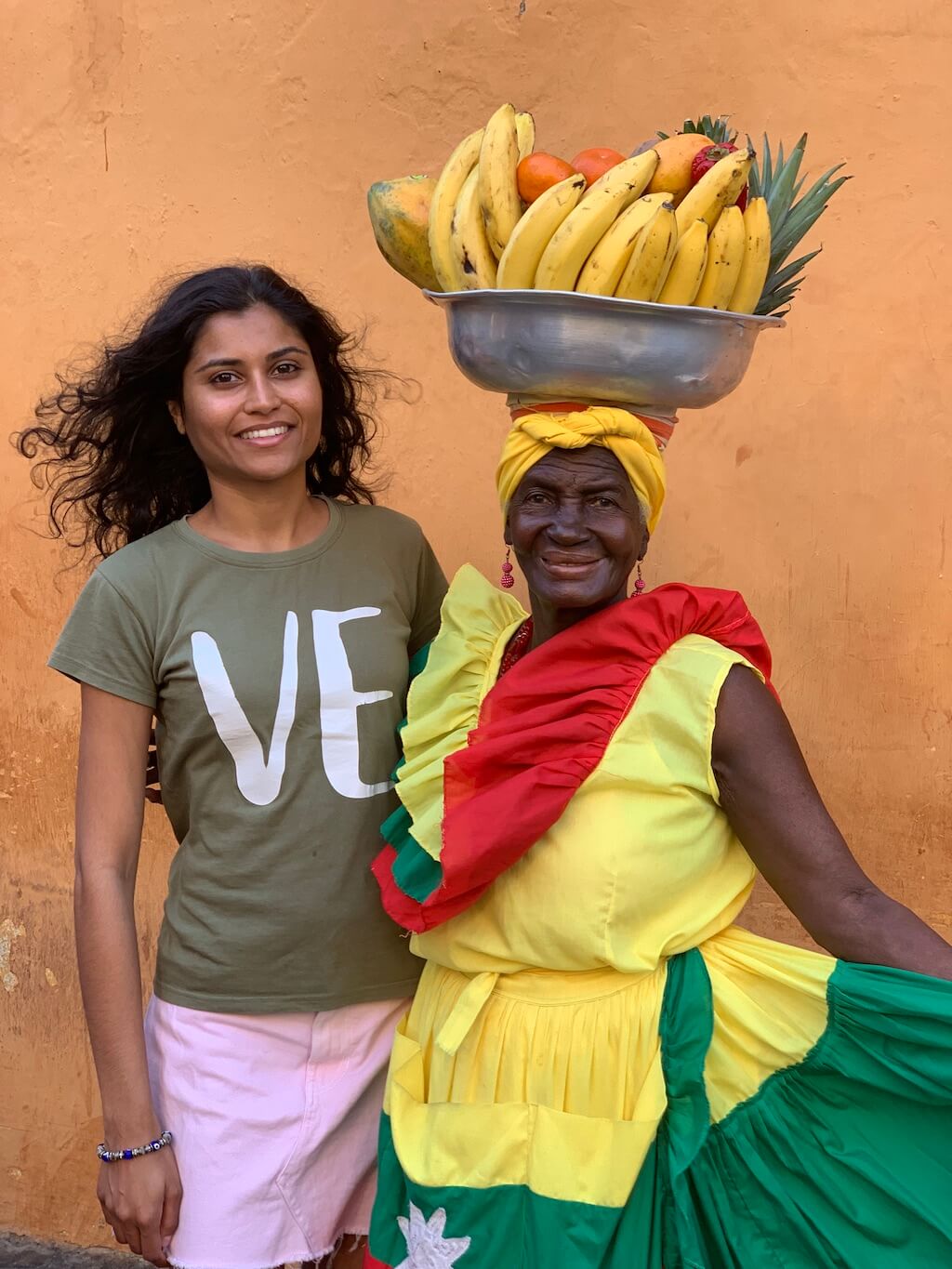 |
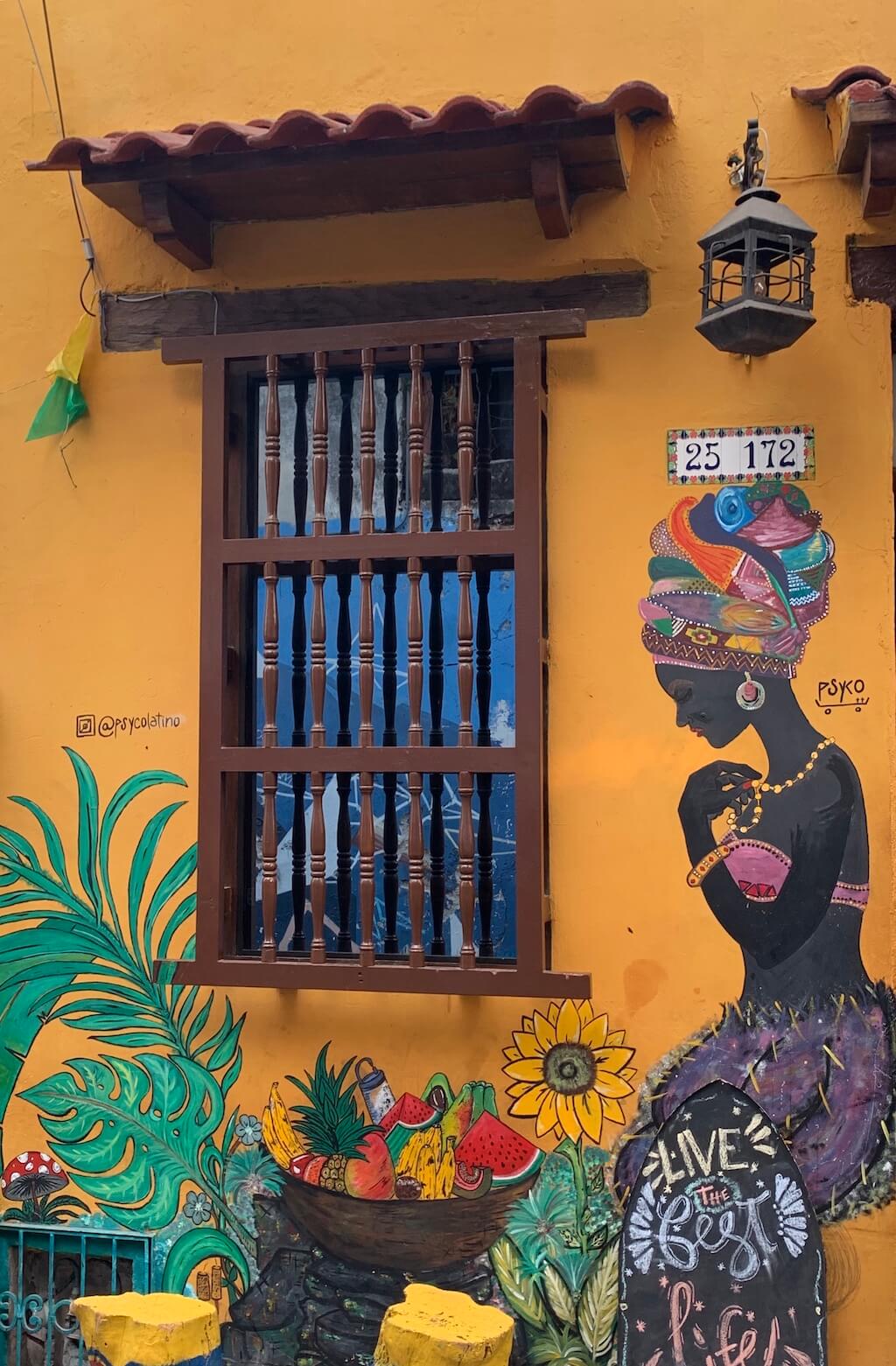 |
|---|---|
| The kindest palenquera told me how she has dedicated her whole life to the fruit-selling tradition | Don’t miss the colorful murals during the walking tour of Getsemani |
The historic fort, horse-drawn carriages in the walled old city, and the bull ring that is now an upscale mall are just enough to transport the visitors back in time. Be sure to catch the free performances of Afro-Colombian folk dances like the Mapalé, Bullerengue, Puya or Porro at the clock tower. The bold skyscrapers in Bocagrande overlooking the Caribbean Sea juxtapose with the old-town charm and make a visit to Cartagena unforgettable. There are plenty of day trips to nearby islands as the beaches in the city are not the best. The cuisine in Cartagena is delectable, so make sure to try the sweet coconut rice and seafood at the Anthony Bourdain fame La Cevichería. We were also excited to stumble upon the only international location of the yummy Mexican seafood joint called Las Hijas de la Tostada.
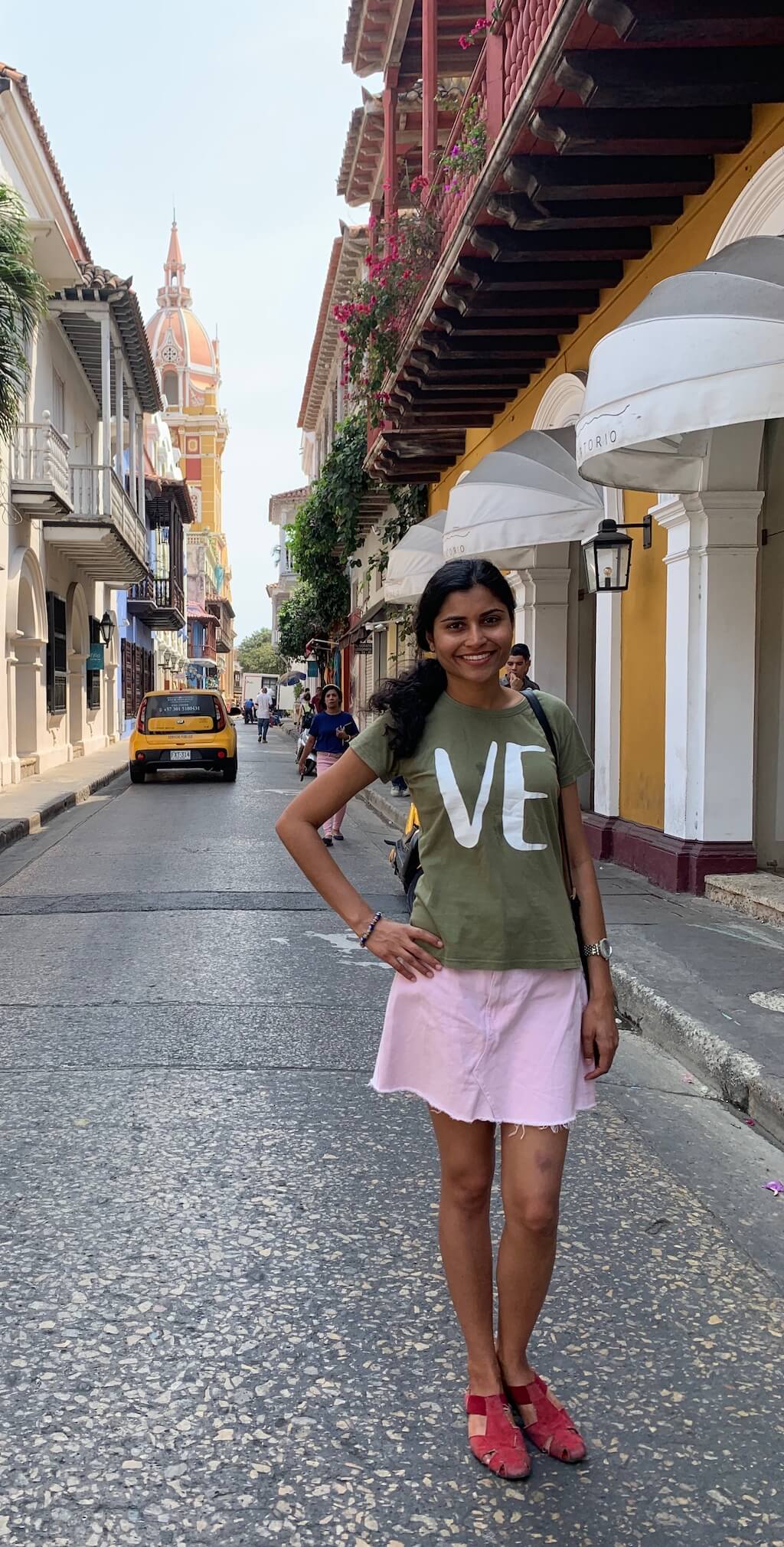 |
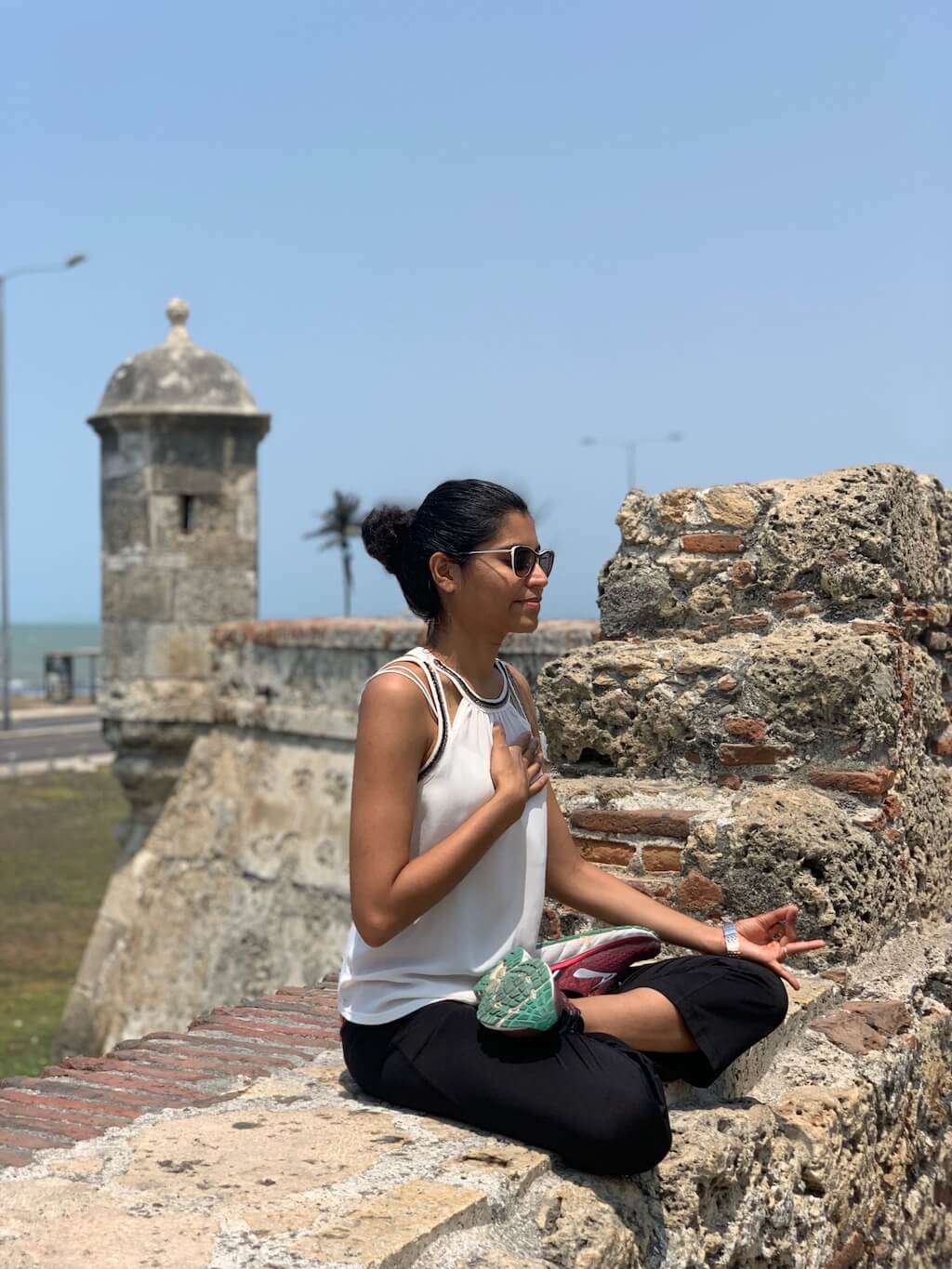 |
|---|---|
| Every sight is a freast for the eyes | Meditating with the ocean backdrop at the Cartagena old-city-wall |
Peru
With its breathtaking history and acclaimed gastronomy, there is so much more to Peru than just Machu Picchu. We traveled from Lima to Cusco and were then repatriated back to Mexico from Arequipa in the south, which makes this trip so unique.
Lima
When we reached Lima in the second week of March, there were less than 20 confirmed cases of the coronavirus. Our temperature was checked before entering the airport and to our surprise, the national monuments and museums were closed down on the same day that we arrived. However, we made the most of this gastronomic capital of the Americas by eating some of the best food ever. Head over to the local market and you’ll see a rainbow of fresh produce like purple corn, lucuma, camu camu, aguaymanto, gelato flavored with aji peppers (which tastes amazing by the way), and everything in between. For a more upscale dining experience, check out Astrid & Gastón. A fresh farm to table concept restaurant, the vibe is pretty relaxed especially during daytime. Check out the herb garden at the entrance.
 |
|---|
| Can’t decide what to get at Astric & Gaston |
I think that Lima is a very underrated city that rivals Miami or Los Angeles with its amazing infrastructure, eco-friendliness, cuisine, breathtaking views and sunsets. Lima’s history is evident in the magnificent Plaza de Armas or the Huaca Pucllana pyramid in the middle of Miraflores that dates back 2000 years and we could only see from the delectable restaurant in the premises because it had just been closed.
 |
|---|
| Dessert at the Huaca Pucllana restaurant |
Something that is increasingly rare nowadays with the internet: witnessing the most diverse group of debaters freely speaking about socio-political and international affairs in Plaza San Martin that was packed with curious bystanders absorbing alternative information sources and even conspiracy theories about the country and the world.
 |
|---|
| Mind-blowing sunset in Miraflores |
Cusco
The gateway to Machu Picchu, as soon as we landed in the charming ancient Incan capital of Cusco on March 15, news was fresh off the press that the entire country would be under lockdown for two weeks to help contain COVID-19 cases, with 70 confirmed. We were hoping to visit Machu Picchu on the next day, but the Coronavirus had other plans. We just had a day to get our AirBnB and everything we would need for the next few weeks. We were astonished by the cheap produce we bought at the local market (under 100 soles or $30 USD) for two weeks’ worth of produce compared to the same amount we would pay for just one meal at a nice restaurant. Just as we were getting comfortable with our daily yoga and cooking in Cusco, my husband’s dual citizenship came handy when news arrived late on March 19 that the Mexican Embassy would provide repatriation flights free of cost to its citizens stranded in Peru. The caveat was a 12 hour bus-ride from Cusco to Arequipa, a city in southern Peru where we would catch the flight back to Mexico. Thinking that we had made ourselves comfortable in Cusco and the uncertainty of whether I, an Indian wife of a Mexican citizen, would be even considered for Mexican repatriation, we dismissed the idea of returning to Mexico hoping to visit Machu Picchu once lockdown was lifted.
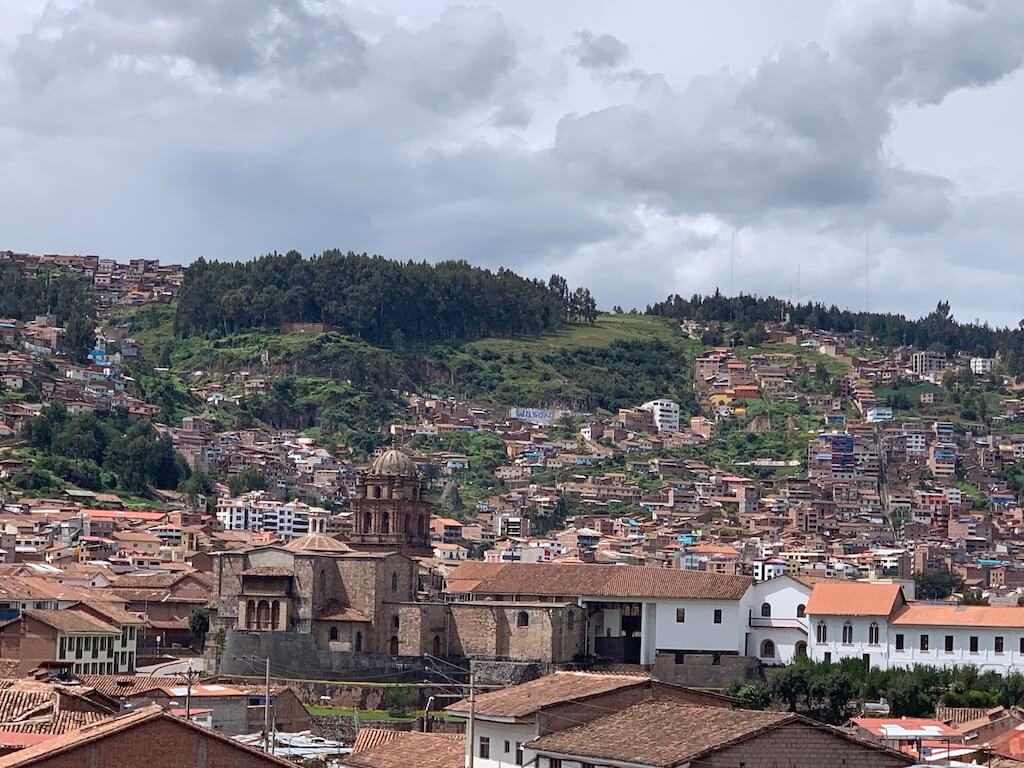 |
|---|
| The breathtaking view of Cusco from our AirBnB terrace |
Waking up at our own pace the next morning, we reconsidered our choice to stay and we concluded that it was best to grab the opportunity. Our impulse was to take the free flight back to Mexico considering that most other ‘developed’ countries had no such arrangement for their citizens, which ensued in a huge outcry among stranded citizens from the US over the lack of government effort to assist with repatriation. As a side note, many countries eventually offered repatriation to their citizens from Peru for a hefty price tag while other countries like Mexico were providing free humanitarian charter flights.
Mexican rescue operation
It was already 8 AM, the time when the Mexicans were to convene at the main square. I had never before dressed up and packed my bags quicker than that day! Stepping out for the first time since lockdown, we ran with our luggage for 15 minutes to reach the meeting point and were the only ones on the streets apart from the military guards enforcing the curfew. When we informed a soldier of our situation, he passed on the message to his colleagues at the main square. Just as we were approaching the center, we saw a few buses leave and thought we had missed our chance to go back to Mexico. But upon reaching, we saw at least 10 more buses lined up and caught our breaths.
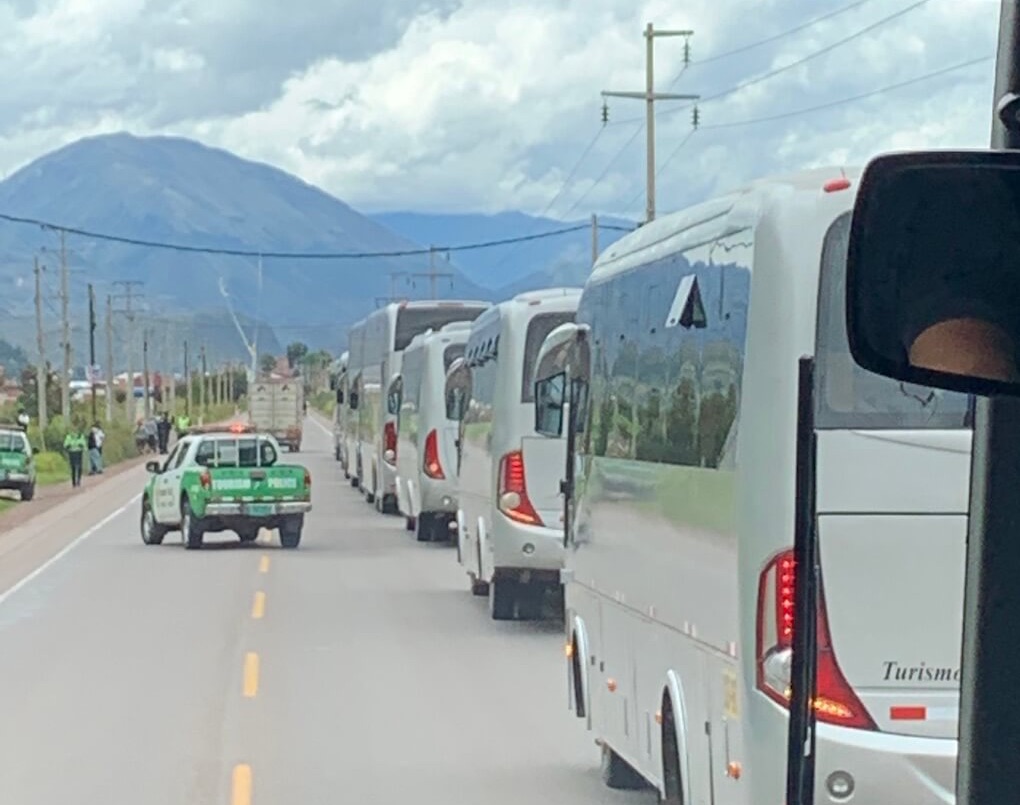 |
|---|
| Our bus caravan |
About 300 Mexicans were being screened and registered to be put on buses. Although we were among the last in the queue, we secured a spot on the only bus without a restroom on board. Shortly, the long and slow journey to Arequipa began. We traversed through Andean villages and towns with views of the beautiful mountains, streams, llamas grazing in the fields, and the villagers coming out to see the fleet of 12 buses during quarantine. Not a single other vehicle apart from our bus caravan was in sight. A few towns had military vehicles escort us out through the city ensuring we didn’t stop even for restroom breaks. In the 18 hours that we spent traveling, we were allowed only 3 restroom breaks, with one of them being out in the open at night. In one instance, the military refused to let us use the public restroom thinking that we could be contagious. What made it harder was listening to the same songs on loop at high volume that talked about poverty and alcohol abuse. One particular song is impossible to get out of our heads, even 4 months later
 |
|---|
| Strict military check-posts were enforcing the lockdown |
Upon reaching the airport at 3 AM in Arequipa, we were informed that there were more people than the capacity of charter flights sent from Mexico and some would need to stay back. Families with children, seniors and those with underlying health conditions were prioritized. My prescription daily Ayurveda medications for allergies were almost running out and I really needed the refills so after a bit of insisting, thankfully, we were allowed to board the aircraft. There were no boarding passes, security or luggage tags and we were finally on board the charter plane. Through all of this, our ray of light was a 4 year-old boy, Leo, whose intelligence surpassed his age. His joy and positivity were contagious. He was on our bus without the restroom and then sat next to us on the plane. Not once did we hear him scream, cry, or complain. Instead, he was just busy winning hearts all around with his innocence and inspiring us to be happy no matter what.
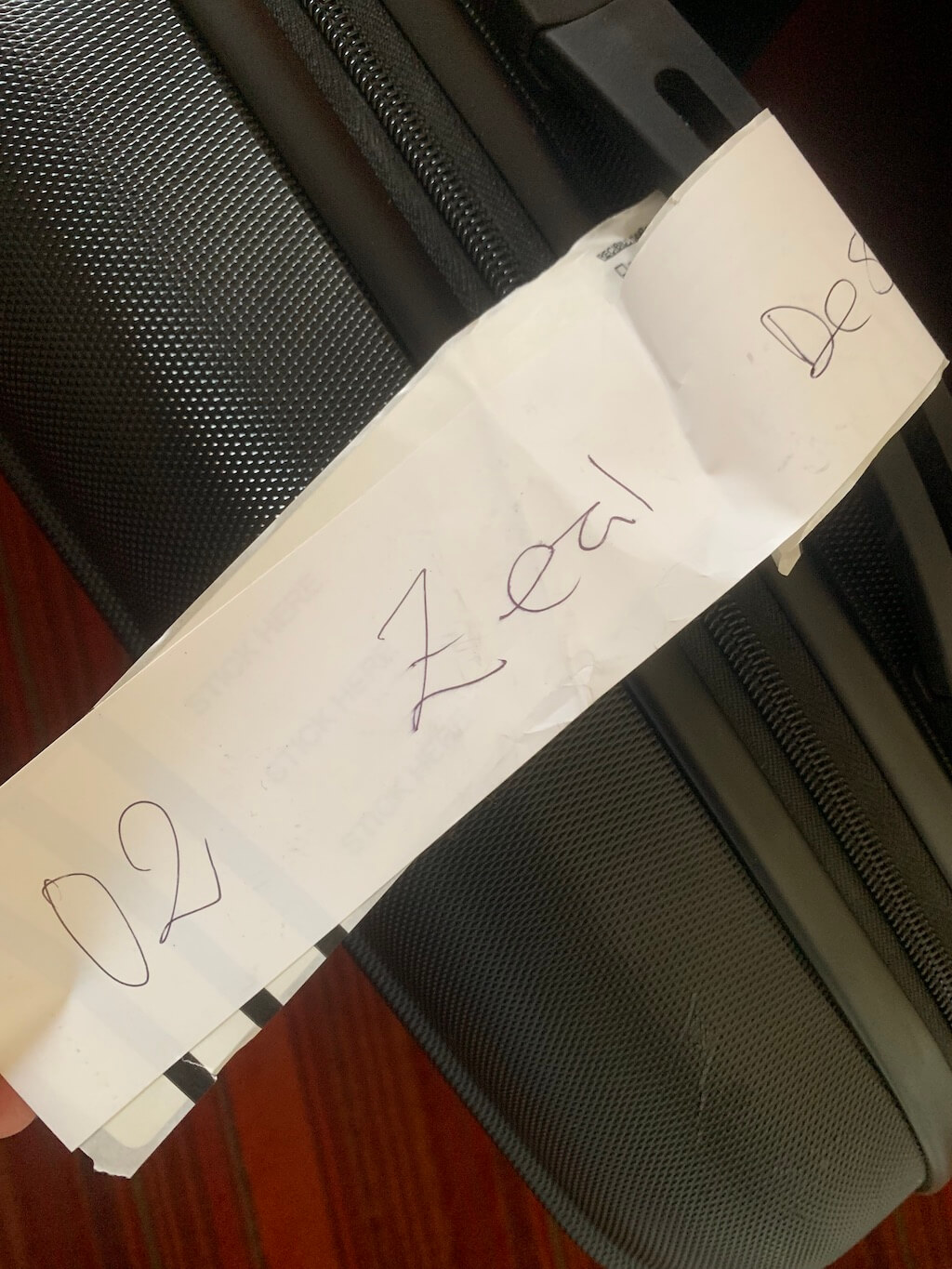 |
|---|
| First ever hand-made check-in luggate tags - Flight 02 |
Our flight made two pit stops for refueling, one in the north of Peru and the other in Panama City before landing in Mexico City almost 30 hours after leaving Cusco. It was a moment of joy as the whole plane cheered ‘Viva México!’
I really felt proud of this beautiful country that is my second home. A big thanks to the Mexican Embassy in Peru: I was able to accompany my husband back to Mexico even though I am not a Mexican. Many other international traveling couples haven’t had the same luck. We ended our pre-pandemic traveling year rather dramatically. Unfortunately, Peru became one of the countries with the most deaths per capita despite the long lockdown period lasting 3.5 months. Our Peruvian and Colombian adventure will definitely go down in our travel history as the most extraordinarily unusual and memorable one.
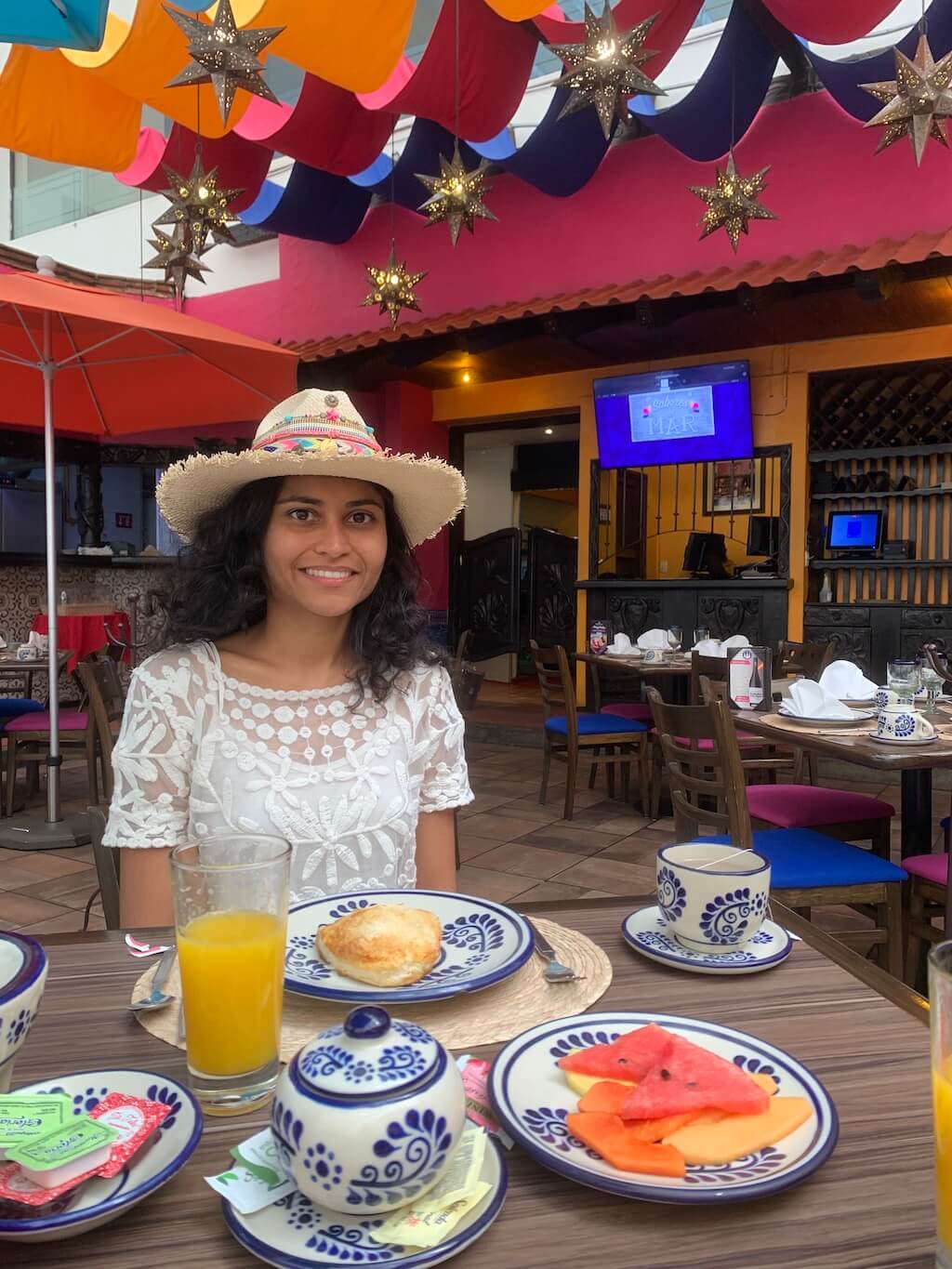 |
|---|
| First Mexican meal during the pandemic. Next time at Terminal 1 of Mexico City, try Cucara Macara restaurant. You can thank me later 😊 |